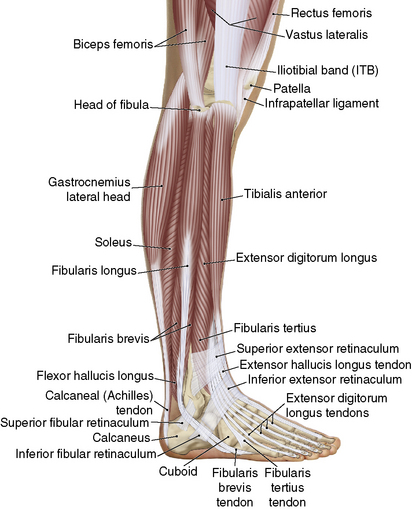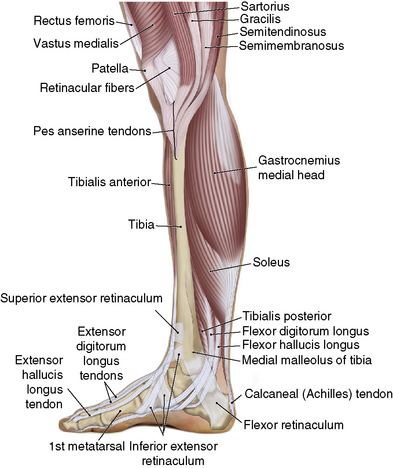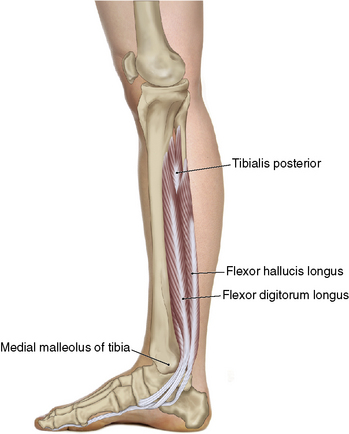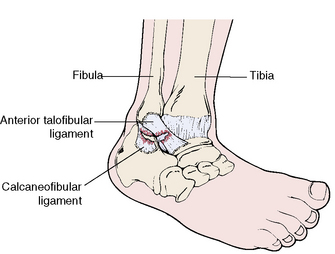Chapter 10 The Leg
1. Understand the musculoskeletal components of the leg.
2. Explain the difference between a sprain and a strain.
3. Describe the grades of sprains and strains.
4. Explain shin splints and tibial stress syndromes.
5. Describe the compartments of the leg.
6. Understand the severity of compartment syndrome.
Anatomy of the leg and foot
The foot alone contains 26 bones, 33 joints, 107 ligaments, and 19 muscles (Figure 10-1). Add the tibia and fibula and the muscles of the leg, and you have a complex unit that allows for gross movements and micromovements. This chapter focuses on major musculature of the leg and its common injuries.
Sprained and strained ankles
It is important to understand the difference between sprain and strain injuries. The approach to care for these injuries varies and depends on the structure that is injured. A strain is an injury involving the musculotendinous unit. These injuries are usually due to excessive contraction in the muscle or sudden elongation of the muscle. A strain happens in the muscle belly, the tendon, or at the musculotendinous junction. Grades of strains are categorized by the severity of the injury. Grade 1 strains are mild, and involve a minor stretch or tear. There is little loss in strength and mild discomfort. A grade 2 strain involves muscle fiber tears and a loss of strength. A more noticeable loss of strength and pain during activities is present. Grade 3 strains are the most severe. They involve a complete tear of the musculotendinous unit. This can occur at the bony attachment or in the muscle itself. The muscle bunches up and there is a noticeable change in the surface of the area. Those experiencing a grade 3 strain are unable to continue activities because of extreme pain and muscle weakness (Figure 10-2).
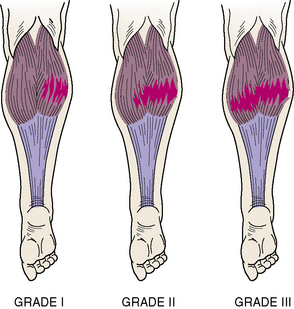
Figure 10-2 Muscle strain.
(From Salvo SG: Massage therapy: principles and practice, ed 2, Philadelphia, 2003, Saunders.)
Sprains occur when a ligament is overstretched or torn. These tears are most often caused by sudden twisting or shear force. Sprain and strain injuries present discomfort, swelling, heat, and some color changes depending on the severity. Ligament injuries also have an effect on the stability of the joint. Grades of sprains are categorized by the severity of the injury. In a grade 1 sprain the ligament is overstretched or has minor tearing. Although this may be slightly painful during activity, it does not affect activities of daily living and there is no loss in stability of the joint. A grade 2 sprain has ligamental tearing along with swelling and pain. There is often a snapping or popping sound at the moment of injury. This grade of injury shows some loss of stability and may appear to be hypermobile. In grade 3 sprains the ligament is completely ruptured. The joint is highly unstable and painful (Figure 10-3).
